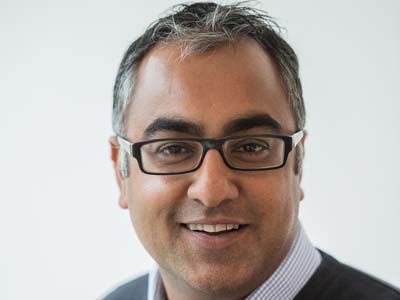Baby boomers remember an earlier TV era where the number of terrestrial channels could be counted on one hand, and not setting the video recorder correctly meant missing a favoured show until the inevitable Christmas repeats. A time where the TV sat pride of place in the living room and ownership of the remote control […]

Baby boomers remember an earlier TV era where the number of terrestrial channels could be counted on one hand, and not setting the video recorder correctly meant missing a favoured show until the inevitable Christmas repeats. A time where the TV sat pride of place in the living room and ownership of the remote control was key.
By contrast, millennials have grown up in a decade with burgeoning choice. Not only has the typical offering across digital terrestrial TV grown to over 30 channels, the extended choice of cable, satellite and IPTV has been further supplemented by paid over-the-top (Pay-OTT) providers such as Netflix, Clarovideo and StarHub Go with low cost video-on-demand packages.
It is this last category that is dramatically and rapidly altering the TV industry status quo. At the annual Consumer Electronics Show (CES) earlier this year Netflix announced its launch into 130 new countries, adding to its existing services across 55 countries in a move to grow its 70 million global subscribers. In some of these new territories, incumbent pay-TV operators have been dreading yet expecting the move. 2016 is likely to be a year where cable/satellite pay-TV, broadband providers and newly arrived pay-OTT operators accelerate efforts to win and retain subscribers while finding new ways to drive down costs.
The stakes are high. According to ResearchandMarkets, the global pay-TV market is expected to be worth $51.1 billion by 2020 and the portal into the consumer offered by many of these services may well capture a portion of adjacent $100bn+ markets such as the Internet-of-Things, eHealth and security.
In this highly competitive market, many operators closely guard the motivations, content usage patterns and profiles of their respective subscriber bases. Fundamental questions like subscription duration periods, subscriber demographics and market share, combined with insights into motivations and perceptions around customer service and content, can help incumbents and newcomers alike build better and more profitable services.
To answer some of these questions, Paywizard commissioned Research Now to survey a representative sample of almost 6000 people across 6 countries within the Americas, Europe and Asia-Pacific to gain some new insights.
The survey makes interesting reading especially for executives in any of the 130 countries where Netflix – the pay-OTT provider that was most watched by the survey participants – expects to operate. Existing pay-OTT services can be comforted by the fact that demand is strong: a quarter of respondents (25%) already subscribe to a paid OTT TV service and roughly another quarter (27%) planned to sign up in late 2015. There is also huge seemingly untapped potential for growth. For example, older demographics like the over 45s are much less likely to sign up to a pay-OTT service, although if they do, are more likely to stay loyal.
However some findings highlight that pay-OTT players still have their work cut out. A closer examination of the data and surrounding market research also suggests that pay-OTT is more of a supplement than a replacement for traditional cable/satellite services, which are increasingly valued for the provision of high-speed internet connectivity rather than just content.
Furthermore, although the survey highlights huge amounts of potential for pay-OTT, it must be tempered by the reality that churn rates are also far higher than the 12-18 month contracts that traditional pay-TV operators impose. In some territories with vibrant competition, pay-OTT exhibits churn that is 6 times greater than established pay-TV rivals.
Another brake on pay-OTT growth is profitability. Compare a top end satellite or cable TV bundle plus a broadband service generating an annual ARPU of $1500 to an average of just $120 for a service such as Netflix. Admittedly, Netflix has avoided large elements of fixed infrastructure costs but is still facing an enormous bill for content that it estimates as around $5 billion up to 2020. This bill may actually grow as the service finds it harder to buy top shows from content owners that also offer rival pay-OTT services such as Hulu owned jointly by 21st Century Fox, Disney and Comcast’s NBCUniversal.
The challenge is further complicated by the desire for regional content. As evident from the survey which looked at consumers from places as diverse as Germany, Singapore and Brazil; region preferences are considerable.
These three factors of high churn, low ARPU and the need to regionalise will force Netflix and pay-OTT regional rivals to better understand their respective audiences if they hope to capitalise on the potential. Netflix as the pay-OTT defacto global provider is far from a certainty. In fact, the market making moves may well be the spur that starts a new wave of service innovation from operators across the world to build regional alternatives that better serve their audiences. This will be a battle of analytics, insights and service delivery and an area that will be the one to watch in 2016.
Bhavesh Vaghela is CMO of Paywizard.











































































